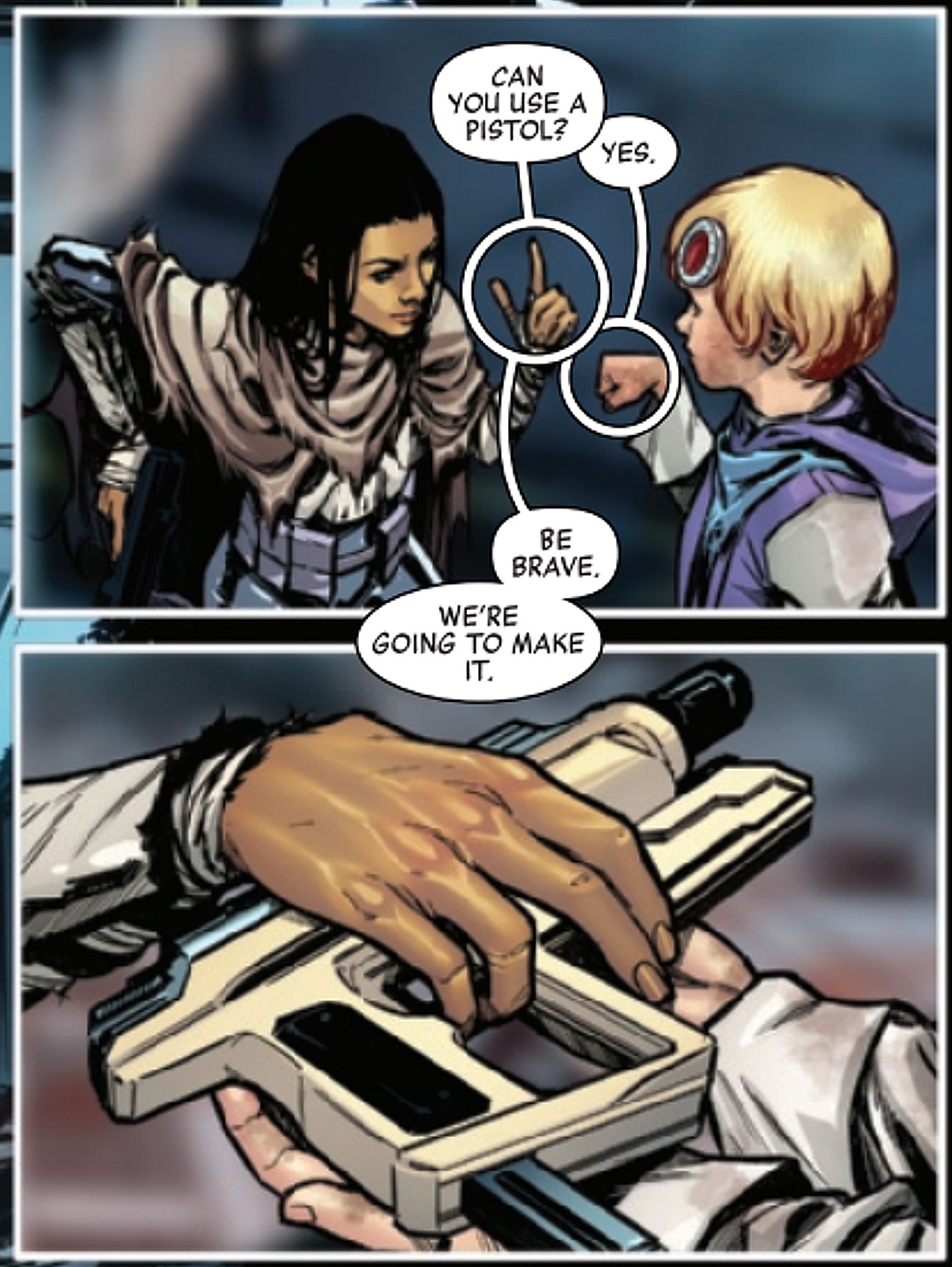The newest line of Alien comics from Marvel Comics have found a clever way to advance deaf representation and inclusivity in its title. The Alien franchise is one of the most beloved science fiction franchises in modern media. Ever since the debut of Ridley Scott’s first film in 1979, fans from all over the globe have exclaimed their love for the expansive universe dominated by the Xenomorphs. The series has garnered fans of all backgrounds as the creatures have taken on Marines, inmates on a prison planet, synthetics and even its most dangerous adversary, the Predator. However, a new run of comics featuring the iconic monster has found an amazing way to not only appeal to deaf fans but make them feel more represented as well.
In Alien #5 by Phillip Kennedy Johnson and Julius Ohta, a band of synthetics is on the run from the terrifying Xenomorphs while on a mission to locate an alien egg and bring it back as a specimen. However, they find a group of humans with a kid who happens to be deaf. The child knows sign language but is ultimately mute. What’s brilliant though is that Alien actually avoids being expository with this information by focusing speech bubbles on the hands whenever the unnamed deaf child or Freyja, one of the synthetics fighting off the deadlier Xenomorphs, are signing to each other. This is essentially a way of saying that their hands are doing the talking, and the speech bubbles that come from them are what the characters are signing.
Alien‘s New Speech Bubble Technique Opens the Path for Further Deaf Representation

This type of speech bubble may seem like a little detail, but it actually could make a huge impact for how deaf people are shown in future comics. It’s difficult to show someone knows sign language in a comic because, unlike film and television like the sign language created for Tuskan Raiders, readers are left to interpret actions through still images. Until now, most comic artists would showcase sign language by showing blurred hands and lines to indicate motion when communicating. The problem with this though is that it could come off as something else for some readers, like stimming or motioning in a moment when things need to be quiet. It’s not a definite assumption people can easily make. By incorporating this method of indicating sign language in typical comic situations, readers can better interpret that one or more of the characters in a group could be deaf and understand what is being signed to them.
The modified speech bubbles to include deaf characters can also be used to learn how to be more inclusive of other Alien fans in the disability community. Future artists and letterers could find unique ways to change up speech bubbles to indicate if someone is representing the Autistic or ADHD communities. This could even stretch further into the way characters with disabilities are depicted in comics through artwork to avoid the common stereotypes that come with them. This step forward for Alien could set a huge example for future creators that could change the way readers view members of the disability community.
At the end of the day, Alien and other popular franchises are for everyone. People of multiple backgrounds share common interests and would love to see themselves in the media they adore, and that’s why representation is so important. Placing a speech bubble around the hands to showcase sign language when communicating to a deaf character may seem small to certain readers, but in reality, Marvel Comics‘ Alien just took a huge step toward showcasing how everyone can be a part of the worlds they love so much with just one little adjustment.
Alien #5 is available now from Marvel Comics!




